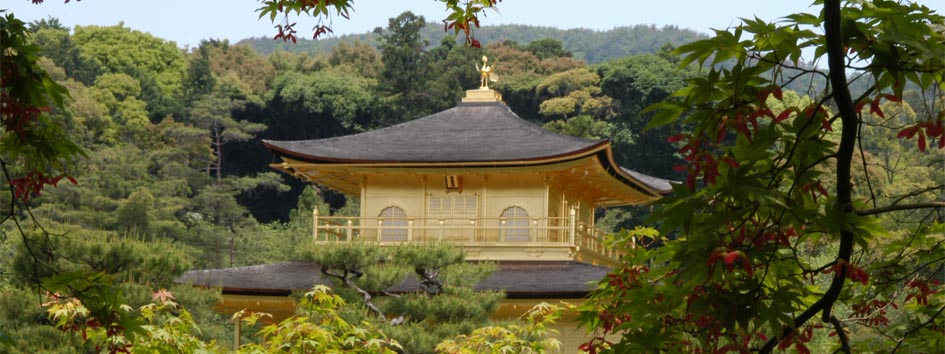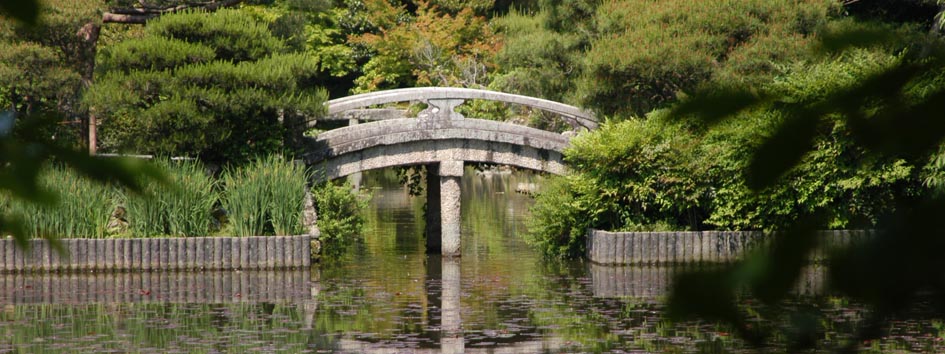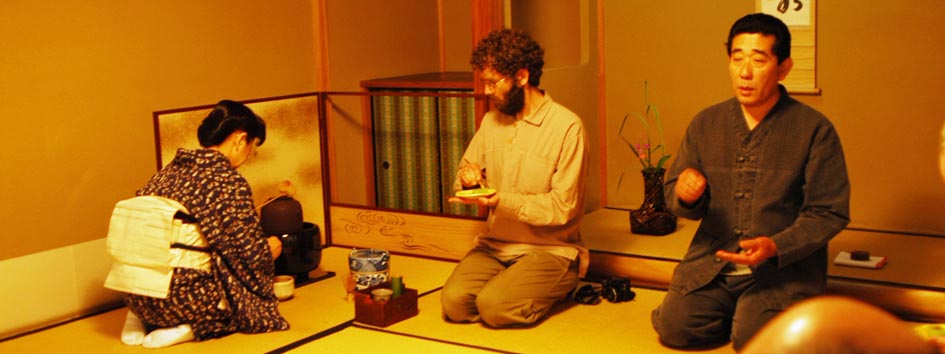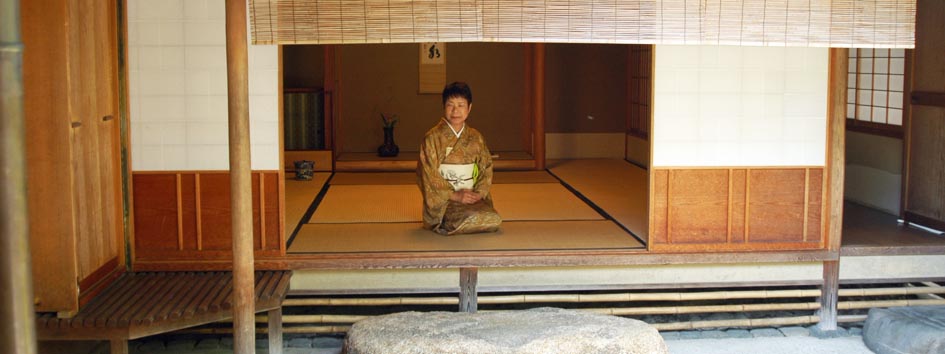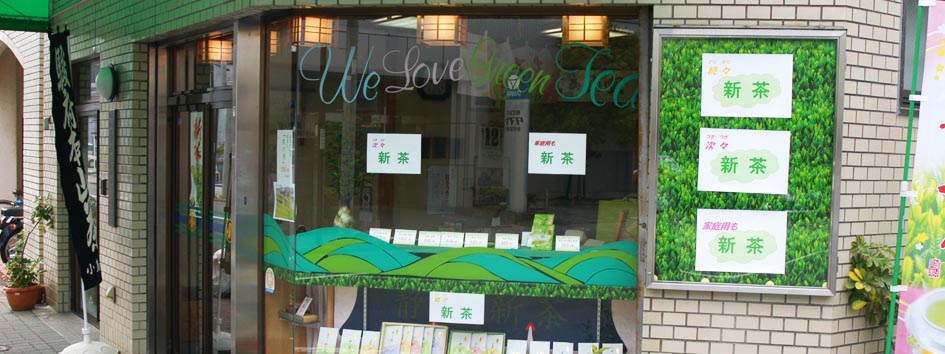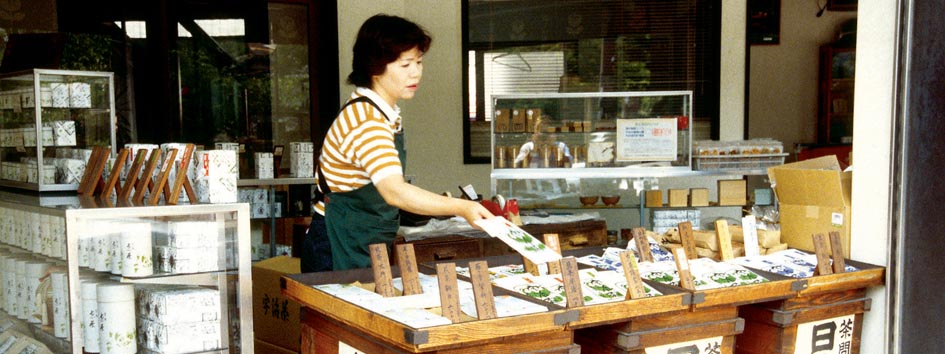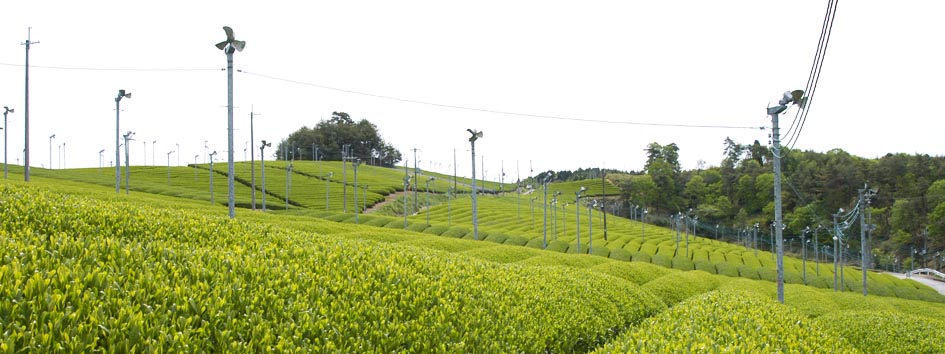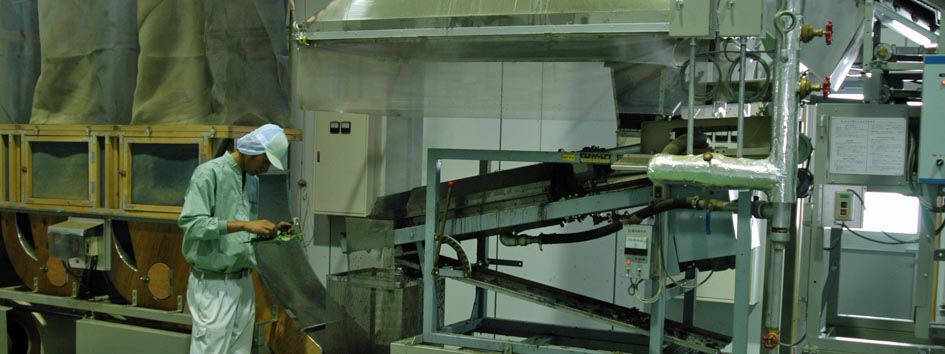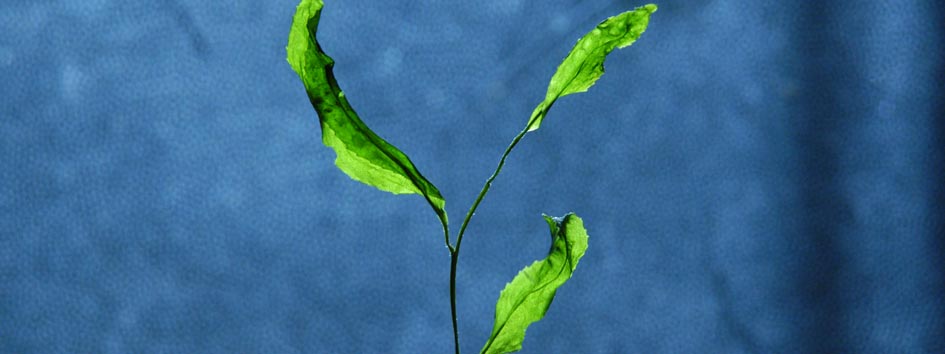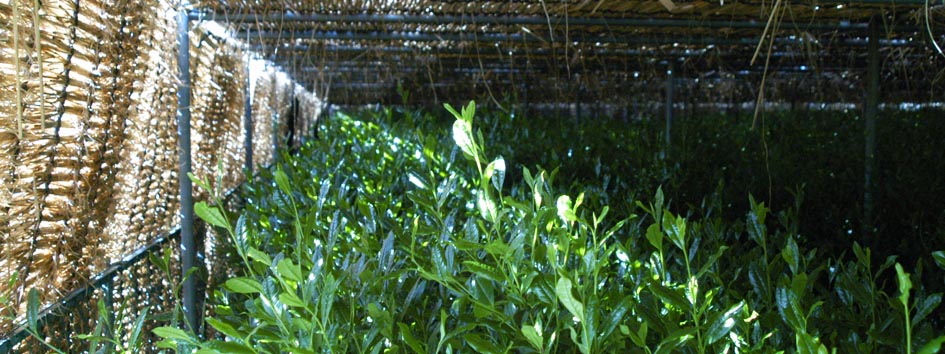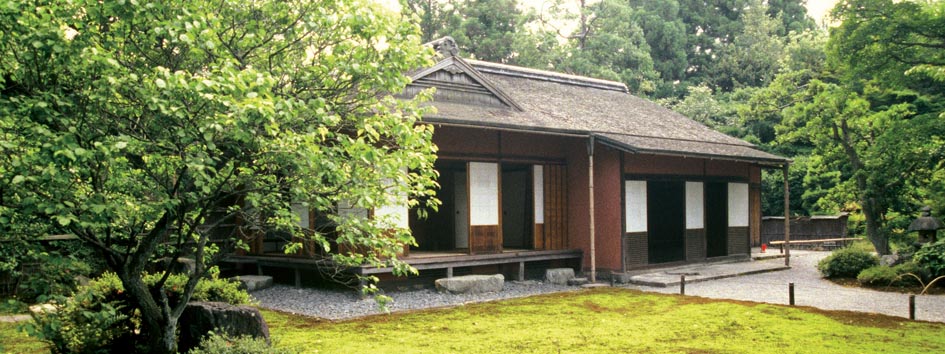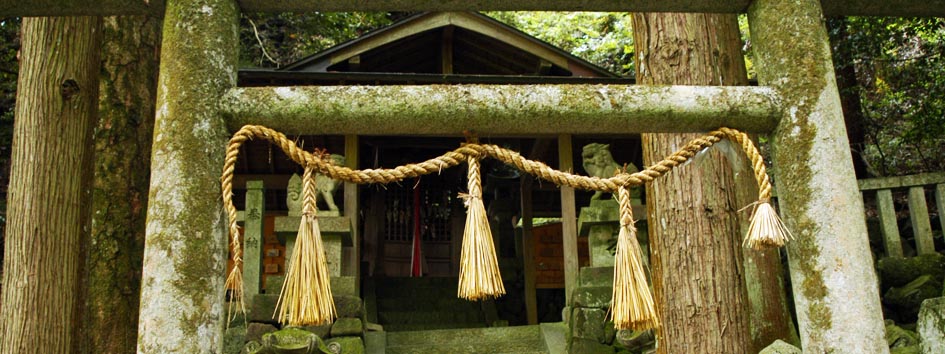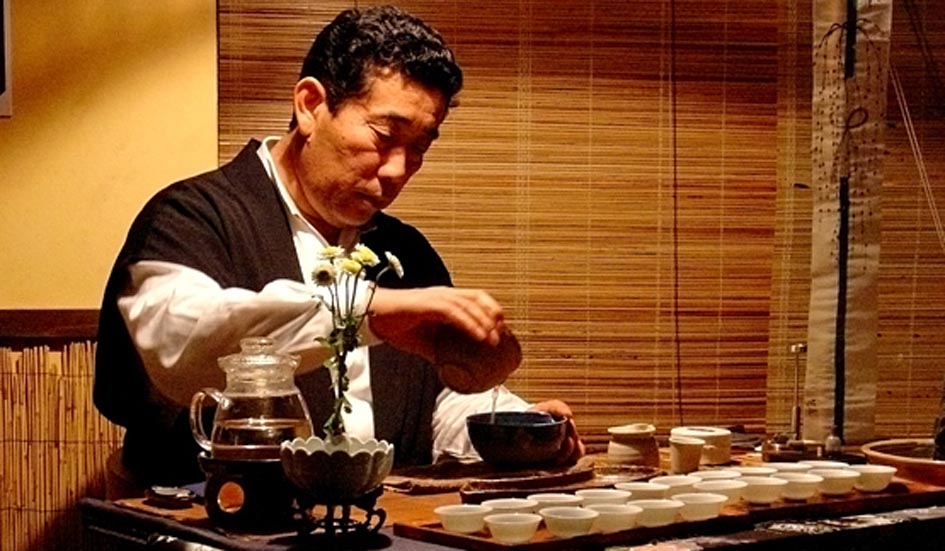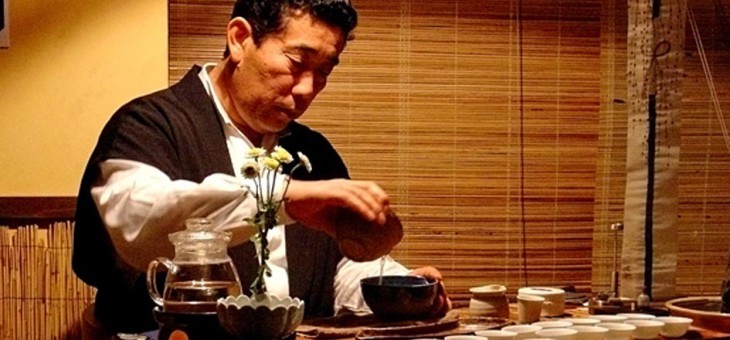
Whilst upon my return from my first visit to China I immediately began contemplating my second trip, truth be known, I was never really that interested in going to Japan. Perhaps it was because Japanese society, thanks to its well preserved traditions and very distinctive culture influenced by years of isolation, intimidated more than enticed me. It was never my intent to aim for perfection by practicing the way of Zen, various martial arts, flower arrangement, or the hardly accessible and thus barely comprehensible traditional religion. And I regarded the Japanese ritual of preparing tea – Chado – exactly the same.
In the late seventies and early eighties, when the Iron Curtain majestically towered up to the sky and the feelings commonly shared by us – ordinary people – suggested it would probably last forever, it was hard to satisfy one’s cultural desires. Books were not imported, and those that were published passed through the thorough hands of communist censors. The spiritual plane in them had to be eliminated or at least suppressed, and the ideal was scientific literature rather than popular educational writing.
The Internet did not exist back then, and traveling abroad was not an option. Or at least not to destinations worth visiting…
The luckier ones who had the opportunity and, for whatever reason, visited the land of the rising sun, for the most part were not enlightened about the mysteries of the local cultural traditions. As a rule, the imported information was shallow, limited to descriptions of a tradition’s outward appearance, while its actual significance was almost always disproportionately exaggerated and thus distorted. And so it was that the body of information about the “marvelous Japanese culture and its untouchableness” that made its way into our communist-controlled country could trigger only that which was triggered in my mind – total chaos, misunderstanding, and disdain.
Even today I don’t understand why there was so little talk of China, which has always – perhaps because of the lack of information – interested me enormously, back then.
Figuratively speaking, I had simply parked Japan in a blind alley.
First, a little theory
But my line of business – tea – did not allow me to ignore the Japanese tea culture for long and I sensed it would have to come someday. By that I mean a direct confrontation in the field, face to face. I started preparing for the trip, but unfortunately I did not take it to the proper end. I turned to my friend Chaki, who was, and still is in my eyes, one of the biggest promoters of Japanese culture in the Czech Republic, especially when it comes to tea and modern music. Chaki had already been to Japan numerous times and had even visited lectures on the Japanese tea school Urasenke, where he studied the art of the tea ceremony.
And so I was treated with some “first-aid” from Chaki:
“You come to the tea ceremony 15 minutes early and pass through a gate, a gate that leads you from the chaotic world of everyday life to a clean, polished space, where in many things details are revealed in their essence. You sit for a while in the garden in order to relax, purify, and focus your senses on perceiving. The hierarchy of the guests is also established.
Before entering the teahouse, you must rinse your hands in a basin with water and rinse your mouth out to wash away sins.
After entering the tea room, the guest bows and goes to inspect each area, first the alcove where the scroll is hung, then the fireplace with the iron kettle for hot water, the ash bed, and the dim glow of lit charcoal. Then you go to sit in your place, which is designated beforehand by the hierarchy of guests according to importance. The host speaks of the time, thus the day, when the gathering takes place, of the scenery in the garden, of the scroll hung on the wall. He speaks to each of the guests.
The speech concerning the scroll commences the first part of the main action. The host brings tea sweets.
The guest expresses thanks by bowing, and also thanks the guest on his left-hand side (who is next in line) and apologizes to him for taking sweets before him. The tray of sweets is lifted as high as the stomach, and only then is the right hand used to bring a piece to one’s mouth.
The same procedure of bowing as an expression of thanks to the host and subsequently apologizing to the guest on the left-hand is repeated as the bowl of tea is served.
How the tea is drunk would actually deserve a whole chapter itself, but I would briefly state that the tea bowl is grasped by the right hand and placed on the palm of the left hand. The bowl is grasped by the right hand so that the palm and outstretched fingers are aimed forward and the thumb retracted from the fingers is propped on the front of the bowl (the side facing you). This is followed by a light, respectful bow while lifting the bowl slightly and partially turning it twice in a clockwise direction. In so doing, the front of the bowl (frequently adorned with a decorative painting) is on the opposite side of you, as your lips should not touch it. The position of your right hand changes so that its palm hugs the right side of the bowl and you can press the bowl to your lips. The bowl, however, is still resting on the palm of your left hand! Now you can drink the tea in small sips. But you must never set the bowl down between sips. It is desirable to drink all the tea and to accompany the last sip with an audible slurp.
After it has been drunk, pass your right thumb and index finger over the place where your lips touched the bowl and wipe your fingers on your paper napkin. The bowl still rests on the palm of your left hand. Then half-turn the bowl in the manner already described, but in the opposite direction (counter-clockwise), so the front faces you again. It is good to closely examine the decorative painting and set the bowl in front of you with your right hand.
It is important to realize that the entire ceremony must be completed in the traditional Japanese position seiza!”
When practice lags behind theory
The theoretical part of my preparations was over. I thanked Chaki and, as a precaution, asked him whether there was any hidden danger of embarrassing myself or whether the whole ceremony could be ruined by an unexpected faux pas.
“Rest easy, but your knees might hurt a bit,” was the answer. And so I started looking forward to my first tea ceremony, with no notion of what might be lurking behind Chaki’s succinct reassurance.
After the Velvet Revolution in 1989, very reputable and important guests started coming to the Czech Republic. From the most prominent politicians, businessmen and cultural figures to esteemed spiritual leaders like the Dalai lama. And so it happened that I myself headed to see Soshitsu Sen XIV, Grand Master of the Japanese Urasenke School of Tea, the supreme guru of connoisseurs and devotees of Japanese tea culture.
The gathering with Soshitsu Sen took place in the Prague Castle under the patronage of then president Václav Havel, and only a select elite could participate. Nevertheless, even ordinary citizens were not forgotten. They had the honor of squeezing into the back and sides of the hall where the gathering was held, and so could at least observe the events from afar.
Soshitsu Sen XIV prepared for the invited attendees a tea ceremony, which, however, was not taking place in the intimate atmosphere of a teahouse, but was instead conceived so the guests were seated in armchairs as if in a theatre, the tea was prepared on stage, and contact between the Master and the guests was intermediated by his assistants.
Designated as the main guest was the then chairman of the Czechoslovak parliament, who had claimed a place in our country’s history as a central figure in the communist reform movement and subsequently the main leader of the Prague Spring in 1968.
The ceremony was long, which is normal, the armchairs comfortable, and the fatigue from the statesmanship great. At one point, the ceremony’s main guest even dropped off into a heavy slumber. That was probably not such an unusual occurrence in and of itself, and the Master himself had surely met with similar excusable transgressions of etiquette numerous times in the past.
But what was definitely memorable the sentence the ceremony’s main guest uttered when he awoke and saw before him the Master’s assistant, leaning toward him with a bowl of ceremoniously prepared Matcha tea. Auricular witnesses reportedly overheard him say, “Yes, I’d love a coffee!”
I realized then that I’d have to take Chaki’s comforting words with a grain of salt, and my warranted concerns about participating in a tea ceremony began to grow.
A tea ceremony arranged exclusively for me and my friends was to be a trial by fire. Equipped with theoretical knowledge, instructed by the chairman of parliament’s folly, and full of determination, I seated myself at the head of the guests as the main guest. I would hate to see the word “seated” slip past the reader without notice. I write seated, but I mean knelt. Because seiza is exactly what differentiates us Europeans, Americans, and Africans from the Japanese. Enduring this position without training is simply impossible. And when I say impossible, I concurrently stress that in this case you have to!!!
Our hostess, who had lived with her husband in Japan, where she studied an offshoot of the Urasenke Japanese tea school presented by Soshitsu Sen. She belonged to the reformed branch Omotosenke, which differs from the main school in certain details of how the tea ceremony is performed. There was plenty to observe, ask about, and learn from. But while time flew, my legs stiffened…
I spent the final part of the ceremony – when we learned that the bamboo spoon our hostess had used was of unprecedented value – worth up to 7,000 dollars – and that after each ceremony she places it in a special box with the other utensils laid out before her and stores it in a safety deposit box in a bank – in total suspense.
The incredible pain in my knees, insteps, and hips had long left me, and I suspected it was not a good sign. “Maybe after overcoming that suffering I’ll start transforming into Bodhisatva from bottom up,” it occurred to me…
The ceremony came to an end and I was proud of the rest of my body where I felt I hadn’t erred. The other guests gradually began to get up and tried to get near the hostess in order to have a closer look at the tea paraphernalia. I sensed I was in the way, but I did not want to drag off the deadened part of my body with my hands like an ape, and so I stood up!
I remember the look I saw in our hostess’ eyes the moment I toppled over on her: it reminded me of the scene in the film Jurassic Park where the crew in the broken-down car is attacked by Tyrannosaurus Rex.
What else to add? Perhaps only that, excepting the hostess’ shock, my disgrace and the major blow to my confidence, no other damage was done. Like an injured animal I waited until the blood returned to the lower half of my body, and I exited the scene of my first personal “conflict” with Japanese tradition.
But Japan is not only Matcha
Chaki was very amused by my experience and attempted to reassure me: “Don’t worry, Japan isn’t only Matcha and Chanoyu. In Japan they also drink ‘scattered’ tea, that is, loose leaf tea, and there are many ways of preparing it.” “That’s interesting,” I said to him, “and why is so little written about it?”
“In many areas Japan has achieved the absolute top in the world, and it is rightly proud of its culture and traditions. And Chado, that is, the tea ceremony, is naturally among them. The fact is that drinking green leaf teas is an everyday affair in Japan and therefore does not seem exceptional to anyone, which is why it’s hardly spoken of,” I was informed.
I must confess that it was indeed drinking leaf tea that ultimately took me to Japan.
I set out for Japan with a clear goal. While many others before me had captured the ritual of the tea ceremony, I would try to capture the ritual of everyday tea drinking. Helping me in my search was my longtime acquaintance and expert in the tea business, Mr. Masahiro Takada.
And it was a shock anyway
No matter how well a person prepares himself for the land of the rising sun, he is still surprised when he gets there. “I CERTAINLY WASN’T WARNED ABOUT THIS!” I thought, shaking my head in disbelief before the glass window display full of cans of tea. All the different types! And one could even choose whether he wanted a cold can or a warmed can. “Don’t even tell me that in such a culturally advanced country people drink tea on the go! And from cans!” I decided I’d do a test and wait to see how many people stopped to buy a can of tea from a vending machine. When the tenth one rolled out with a bang within fifteen minutes, and the buyers were children, old people, women and men, I understood that that’s how it is. For me, what became symbolic of contemporary Japan was the young lady in a traditional purple kimono who also bought a can.
“Fine, it’s practical and quick, but that’s enough. I can’t take any more,” I said to myself and rushed off on the train for Yokohama’s Chinatown. “That’ll be tea heaven,” I consoled myself. And to some extent it was. Picturesque shops crammed full of all types of teas from Japan, Taiwan and even mainland China, high quality. “Would you like some tea?” asked a friendly shop-owner. “I’d love some, thank you,” I replied. “And what kind?” “To be honest, I’d really like to try the one you drink most often,” I replied. “Are you serious? But it’ll be cold!” he smiled and gave a cue to his young assistant, who crossed the street to a simple Chinese bistro. The salesperson there tapped a dark liquid into a paper cup from a rectangular device that we’re used to getting Coke, Fanta and Pepsi from, and the assistant was back in a flash. “But I meant tea,” I apologized, assuming there had been a misunderstanding. “But it is tea. Wu Long. Black dragon.”
I had a taste and it wasn’t bad. Pretty normal oolong, which I sometimes make and keep in the fridge on hot days. It also tastes great on the rocks. And here it’s sold in vending machines. Who’da thunk?!
I parted with Tokyo and headed for Kyoto. Taking a seat on the overnight bus, cans of tea jangled in my bag. They’ll come in handy, and tradition is tradition, after all…
A ryokan’s a hotel too!
But there are no beds in it!
Masahiro Takada wanted to do something nice for me and so he arranged accommodation in a traditional Japanese hotel, a.k.a. a ryokan. Entering my room, I quickly realized the main difference. Had I been anywhere else besides Japan, I probably would have asked in astonishment why there were no beds and chairs in the hotel.
But I didn’t want to appear dense and so I pretended it was normal. The ryokan lay on the bank of the fierce Uji River, and from the window local fisherman could be seen catching fish on small wooden boats. Now that would obviously not be too surprising in and of itself. But they were catching the fish aided by tamed birds which kept diving down and retrieving the fish from the depths in their beaks. Now that was definitely a first for me!
As Masahiro comfortably sat on his heels, it hit me that there would be no chairs. And so I sat down too. I was acquainted with the itinerary for my stay and I was exulted. Our first destination was the windmills! But before that, it was time to get into my kimono, my rattan slippers five sizes too small, and scramble off to the traditional Japanese bath – onsen. In all ryokans, besides the traditional tatami mats on the floor, every room is equipped with a smallish pool with hot water, where, following a good shower, guests can warm up to satiation.
Hill full of windmills
Masahiro and I set off for Ujitawara in the Ohbuku-chaen region, where the greatest number of tea fields are concentrated together (otherwise they are generally interspersed between vegetable fields and fruit orchards), and I never ceased to be amazed. The view onto the geometrically perfect rows of tea bushes, stretching across the horizon and copying the little hills and valleys in irregularly regular compositions, carefully shorn into arches so the sun could penetrate through the crown to as many budding light green shoots as possible, is unlike anything else in the world. For me, it was probably the strongest experience the land of the rising sun had in store for me. But what about the windmills?
The tea plantations on Japan’s islands are planted mainly below the 35th parallel of latitude, but in exceptional cases you can find them all the way up to the 38th. The climate here is much warmer than on the same geographical latitudes in, for example, mainland China, but, despite that, it is still necessary to use technical advancements from time to time to protect the harvest. After a period of vegetative dormancy when the tea bushes rest, with the arrival of spring they begin to awaken and light green leaves appear on their carefully machine-shorn crowns. But those leaves are very fragile and would hardly survive the morning coolness of ground frosts. And that’s what the windmills are for! Japan has no trouble solving technical problems, and so as soon as the outdoor temperature approaches the critical point, the propellers automatically switch on, blasting the warmer air from above under the bushes. In this “land of green dreams” it is not exactly romantic, but it is definitely effective!
Japan suffers not from an inability to develop or apply technologies. Japan’s problem lies in ordinary manual labor. And so where paid laborers in India, China or Sri Lanka receive minimal wages, in Japan they are replaced by machines. Whereby with hand sorting the main burden of separating the freshly budding shoots from the tough branches or old leathery leaves remains in the tea fields, machines don’t differentiate while cutting. Whereby after careful hand sorting in Hangzhou, China or Darjeeling, India only minimal treatment by hand or machine is required and the product can be sent to market, in Japan an incredible technological process, comprised of dozens of steps, is just beginning. It all starts with an intense infusion, followed by cooling and partial drying. The next step is a sort of machine kneading, then drying again, polishing with the aid of brushes, and finally sorting. Sorting Japanese tea leaves is a process that has no analogy anywhere in the world. The tea leaves are passed through a complicated machine unit where not only mechanical but also electronic procedures are used to sort the branches, stems, splinters, light or dark colored leaves, or even rounded or oval shaped green leaves.
Light green butterflies
No matter how monstrous the machine may look at first glance, even in this phase one can meet with poetic moments. At one point during the drawn out process hot, dry air is blasted under the moist leaves. The flying leaves are surrounded by mosquito nets and the impression is surprising – light green butterflies floating in the air!
It is common practice for local wholesalers to buy a semi-finished product called Aracha and to store it in giant coolers. Aracha is a mixture of leaves that have been fully processed but not sorted. And having Aracha is actually the same as having capital. But that’s another story. The development of modern technology for utilizing raw materials from tea bushes and the manufacturing and sale of such technology is a Japanese domain. And so you find an incredible variety of uses for them on the Japanese market – from canned tea to ice cream to various sweets and even noodles.
Hands are hands
However, there are always exceptions, and so there are times when human hands can not be replaced by machinery. Not many, but there are some. Perhaps the best example is collecting tea leaves for making ground, powdered Matcha. Unlike other types of tea, the tea bushes are cultivated in the shade of sheds covered by rice straw, the bushes are not trimmed by machine throughout the year into neat rounded shapes, and the leaves are combed solely by hand. The remainder of their processing is, however, entrusted to machines.
The ceremonious preparation of powdered Matcha requires many special instruments and dishes. The most crucial ones – those it would be impossible to do without even if simplifying the process to the max – are Chawan and Chasen. While potters in the Czech Republic have embarked upon making the ceramic dishes called Chawan (and I have to acknowledge they’ve been surprisingly successful), only a master with years of experience can venture into making Chasen bamboo whisks. They mostly live in Japan, and there aren’t many.
And so I didn’t hesitate to accept the invitation of Master Kizoh Nakata from Ikoma City; we drank tea together by a pot of bubbling water and I listened to his account of the love of his life – bamboo, from which he makes every day, imagine, three Chasens! I understood why the price of one bamboo whisk is so exorbitant, and I realized that no one chasen is the same. It depends on the source – the bamboo. The fundamental requirement is that the bamboo trunk is properly matured. The bamboo must be at least 15 years old before it is stowed away under the roof. Of course there are many types of bamboo, and dozens are suitable for making Chasen. Among the most expensive are black bamboo (phyllostachys nigra) and a special variety of bamboo – tortoiseshell (phyllostachys heterocycla). Chasens made of bamboo poles from the roofs of centuries-old dwellings that were heated by open fires fetch truly astronomical prices. Over time the rising smoke created interesting irregular ornaments on the surface of the bamboo stalks, which were interconnected by cords. Master Nakata showed me such pieces, and he was clearly duly proud of them.
Tea gardens
While visiting Japan, and especially Kyoto, it is almost impossible to not to come across a Japanese garden. And tea gardens are a special group. To be precise: coming across a garden does not necessarily mean taking a look at it or visiting it. Gardens are among the centerpieces of Japanese cultural heritage, and are thus befittingly protected, for example, by only letting in a precisely set number of visitors, and not even every day. But this protective measure brings with it a problem. When and how to handle the waiting list of visitors from all over the world who race the clock to change their flight dates due to the scheduled term of their visit to the garden? I was more than concerned when I recalled the account of traveler Zdeňek Thoma, who spent years in Japan just to photograph gardens. Before receiving permission to enter a particular garden, he had to undergo a test that consisted in reproducing calligraphy presented to him. Only then did his calm hand leading the calligraphy brush convince the ticket seller he was ripe to visit the garden!
“My hands don’t shake!” I thought to myself as I confided to Masahiro my wish to visit at least one, say, the “least guarded” one. Three days before my departure from Kyoto, it was like asking a goldfish for a wish.
After a period of intense telephoning, among the short and hectically pronounced Japanese words I heard “Czechoslovakia,” “Věra Čáslavská,” and “Václav Havel,” and Masahiro’s glum face began to light up. I grasped that the name of the 1964 Olympic medalist who captivated all of Japan with her three gold medals for gymnastics disciplines in the Olympics in Tokyo, and the name of our first post-Velvet Revolution president, were the keys to the gates of Japanese temples and gardens. In the end I was even given a choice, and I chose very well.
The Sento Gosho tea garden from the Edo period (1603-1868) was established near the residence of Emperor Gomizuna (1596-1680) when he went into imperial retirement. It was designed free-form by its creator, the architect Enshu, particularly for walks, but he also managed to create an intimate location Uchi Roji (internal garden), characteristic for tea gardens. In it, the visitor can approximate the atmosphere that prevailed here four centuries ago, when he passes through the “central gate” Naka kuguri, and on its threshold has his first view of Nijiriguchi, or the low entrance to the teahouse, so he can – over Tobi ishi (well-worn stones) and led by the Ishi doro (stone lantern) – make his way to (with a short break at tsukubai – the stone pool for rinsing one’s hands and mouth) the Yushintei, that is, the tea room itself.
“What beauty and grandeur!” I realized, but at the same time acknowledged that I was getting back to the very beginning of my Japanese story. Because there, inside the tea room, was where ceremonies like the one I had experienced in Prague and which weren’t exactly my focus once took place.
From the ceremony back to the people
From the outset of my acquaintance with Masahiro I knew that he was among the most enlightened of Japanese tea officials, and therefore even open to unorthodox external influences. That’s why I was not surprised when the day after I expressed an interest in something unknown, hidden from the usual visitors to Kyoto, he took me to the small Chasohmyo Shrine. Hidden under a canopy of tree tops, was my introduction to a historical figure unbeknownst to me, Nagatani Soen. And it was he who, sometime around 1750, in a small bamboo hut on this exact spot in Ujitawara-go – Yuyadani, discovered and perfected the method of processing fresh tea leaves that is most common to today – aided by hot steam. Masahiro and I bowed to this important, yet somewhat forgotten, figure in Japanese tea history. Without wanting to offend him, I had already managed to open up to Masahiro about my not entirely warm relationship with the traditional Chado tea ceremony. “You’re like our young generation,” he retorted. “They don’t have much respect for our traditional values either!” It wasn’t that I didn’t respect them, but there are some things that are problematic for us “non-Japanese.” I am among those who don’t like to rashly adopt something that isn’t pleasant to me only because others are doing it. Masahiro nodded: “Yes, we have a problem with that. Traditional tea rooms have almost disappeared, the Japanese youth are degenerating under the pressure of fast food chains from the USA, and nobody knows what to do about it. But let’s not throw in the towel. Tonight we’re invited to a Senchado tea ceremony. We will be the guests of Mrs. Soukan Miyake, who will show us a new type of tea ceremony.” Trepidation set in…
Although the Senchado ceremony took place on tatami mats which I was used to by then, it was a very pleasant gathering. This ceremony was not about clinging to precise compliance with the long-lived procedures of traditional ceremonies. The main thing was to create a friendly yet cultivated atmosphere, and to drink tea from non-ground leaves. “That is exactly what they don’t get in Japan and even in other countries,” Masahiro and I agreed. “The Chado tea ceremony is unacceptable to most of society due to its conservative nature, while drinking tea from cans is too degrading.”
Chakabuki
In the end, I returned home very satisfied. I realized that the way of preparing and serving tea we aimed for in our Dobrá čajovna (Good Tea Rooms) back home was the right happy medium for our customers. I was glad we hadn’t succumbed to temptation to try to match the untouchable and unattainable tea masters, but that we had still managed to maintain the culture of preparing and serving tea at such a high level that for our customers visiting a teahouse still represents a challenge, an inspiration. “Maybe it is just a form of ‘tea theatre’ for the customers,” it occurred to me. “But why not, if we are well prepared for it and act with a clean heart and put our all into it?”
Several years have passed since my last and only visit to Japan. Despite that, my memories are still alive and extremely clear. I still correspond with Masahir Takada by e-mail. I even had an opportunity to meet with him in China, where our tea business paths crossed one day. While I had gone for new experiences and ideas for importing back home, Masahiro was there for something else entirely. As a representative of the traditional tea culture, he had been invited to present a new ceremony for preparing Sencha and Gyokuro green teas at a variety of occasions. He exported his experience of preparing tea to all corners of the world. And one day he even made it to Prague at the invitation of the Japanese Cultural Centre of the Japanese Embassy.
It was unthinkable not to meet and share our latest impressions and knowledge from our common line of business. From the meeting I had a feeling of commune, but it was not until I got home and studied the printed itinerary for Masahiro’s official visit closer that I noticed something very interesting: his tea ceremony is called Chakabuki – tea theatre.
November 2005
Jirka Simsa

